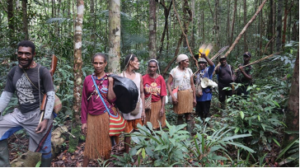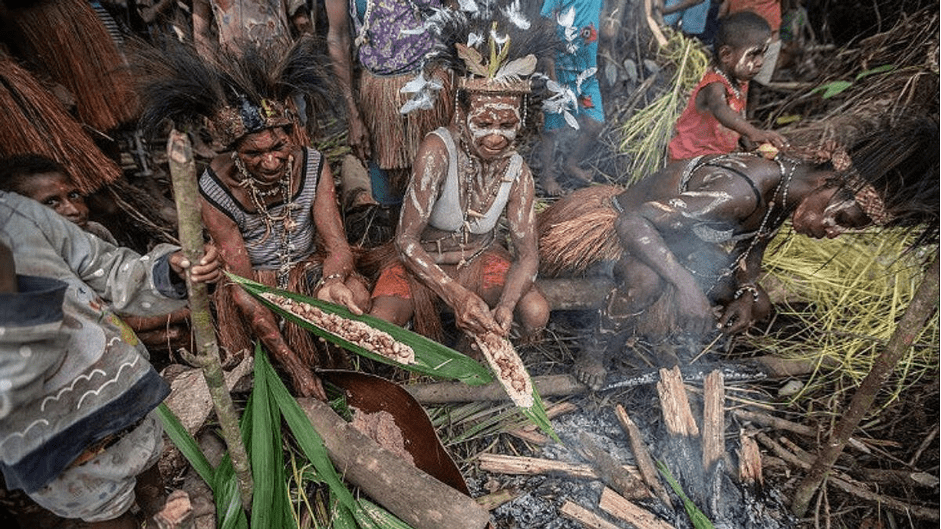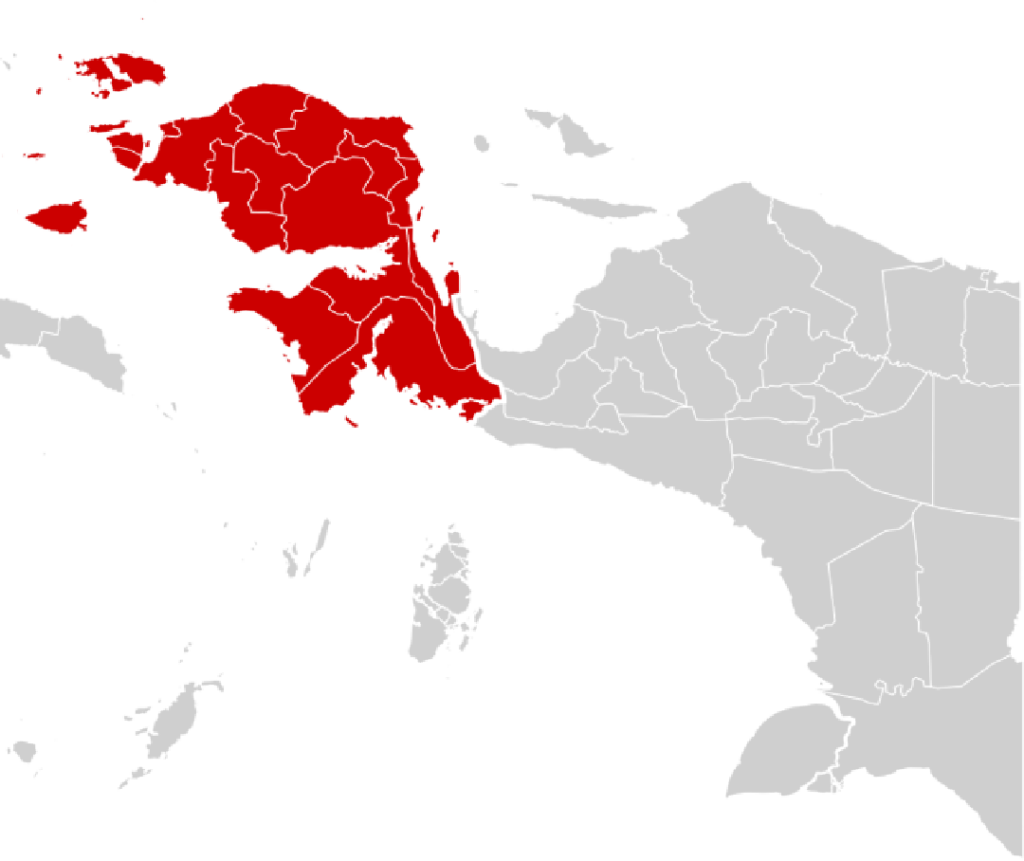MAPPI AND BOVEN DIGOEL DISTRICT, SOUTH PAPUA – The Awyu tribe, also known as Awyu or Awya, is an ethnic group that inhabits the Digul River basin on the coast of South Papua, Indonesia. The area is included in the Mappi Regency area which is also inhabited by the Yahraim (Yaghai) and Muyu people in the western part AND based on the 2017 population census the population of this tribe is around 27,300 people.
The Awyu tribe is divided into several sub-tribes namely;
- Aghu,
- Nohon,
- Pisa,
- Jair,
- South Awyu.
In the South Awyu section there are also several large tribes, namely;
- Malind,
- Mandobo,
- Asmat.
The Awyu tribe is included in the Mappi tribe which is divided into 2 large tribes, namely;
- Awyu Darat,
- Awyu Laut.

The livelihood of the Awyu tribe is mostly as gatherers and hunters and the main food of the Awyu people is sago, fish, and shrimp caught in rivers or swamps and the language spoken by the Awyu tribe is Awyu language which belongs to the Papuan language family which is divided into 5 to 11 dialects, some of which are, Asue, Pisa, Pasue, Aghu, Jair (Edera River, Upper Kia, and Lower Kia), Yenimu (Oser), and Siaxa (Siagha).
This tribe has customs or culture that are still so inherent in daily life, namely; 1) language culture, 2) traditional dance culture, 3) foraging culture in daily life.
1. Language Culture
Language is one of the communication systems used by humans and has an important function in social life as a means of communication, identity markers and others, as well as for the Awyu people in their daily communication using Awyu language, for example calling for father is Kiti or Aye, calling for mother is Uni, and calling for grandfather is Tete and along with the times and technology, the language culture of the Awyu tribe has begun to fade and there are several external and internal factors that make the language culture of the Awyu tribe fade.
External factors are the existence of mixed marriages between the Awyu tribe and other tribes as an example of mixed marriages between the Awyu indigenous tribe and the Javanese tribe, so that the use of Awyu tribal language in everyday life began to fade little by little because of the mixing of languages from both parents and internal factors, namely the attitude of indifference and consider their own culture to be commonplace, so it is easy to forget the values of their own tribal culture.
2. Awyu Tribal Customary Dance
Traditional dances are dances that develop and are preserved from generation to generation in a certain area, especially the Awyu area and usually Awyu dances have various characteristics that highlight the philosophy or cultural values of the Awyu tribe.
One of the dances in the Awyu tribe is the inter-tribal warfare dance which has cultural values in determining the strongest members of the Awyu tribe. The traditional dance of warfare between the Awyu tribe has accompanying songs that tell about the sadness of the heart of someone who survives the war when he returns from foraging in the forest and sees his brothers and the inhabitants of the hamlet where he lives have died as a result of war and until now the war dance is still passed down from generation to generation by the Awyu tribe to be told to their children and grandchildren later through a series of rituals that are taught and performed during cultural festivals or other major events.
3. Foraging Culture
Du in Awyu language means sago which is a symbol of life for the people of Papua, including the Awyu tribe and the tools used for the sago foraging process are still traditional tools such as axes, machetes, sago pounders, sago fronds, and coconut fronds.
Sago trees are cut down using an axe and after falling, the sago trunk is immediately cleaned from the fronds, then the sago trunk is slashed and skinned so that it is easy to cup. How to cup the sago trunk is pounded with a wooden tool whose ends are connected with iron to make it sharper to pound and the pounded sago trunk will turn into small flakes and the next process, screening or the process of removing sago juice and before the screening process needs to be prepared first sago fronds and coconut fronds and a shelter for sago juice or flour. This process is carried out close to the water source to make it easier to remove the sago juice and sago flakes are put into the sago fronds, then watered with enough water, then kneaded for a while, and filtered using coconut fronds as a tapisan.
Water mixed with sago juice will come out and flow into the container that has been provided. The screening process is carried out until all the sago flakes run out and when finished the water in the reservoir will settle and produce fine sago flour at the bottom, the water above the sago flour sediment is immediately removed and the sago flour is ready to be formed into balls. One good sago tree can usually produce four sago balls weighing approximately 5 kilograms per sago ball.
Every line of life of the Awyu people is very dependent on nature, thus making them preserve nature as part of an effort to maintain cultural heritage for future generations.


